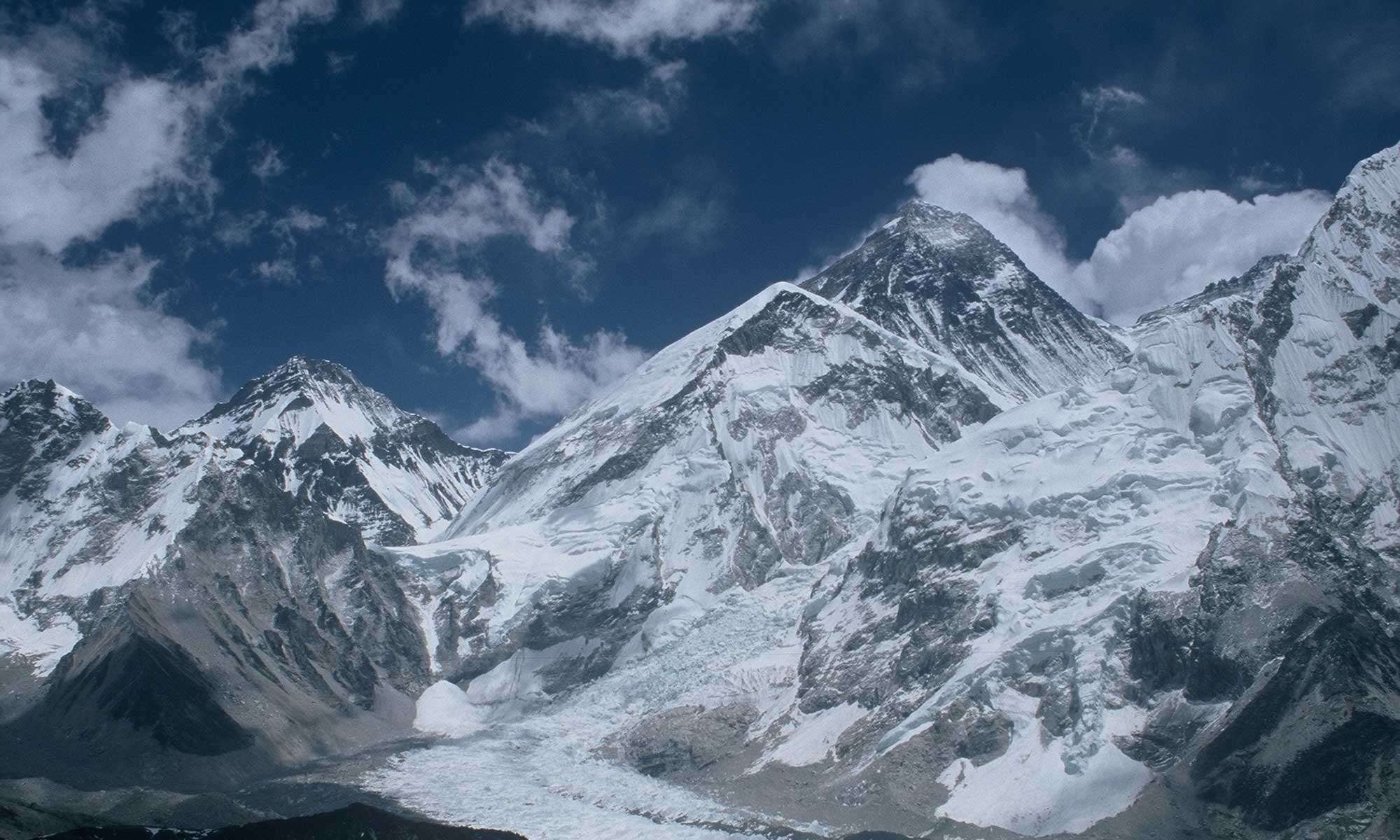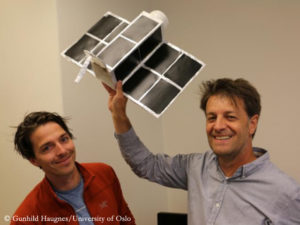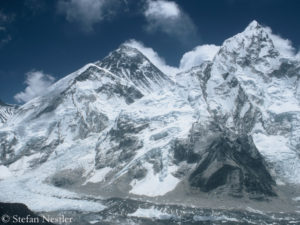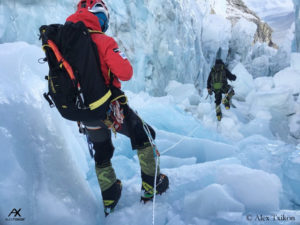The Khumbu Icefall on Mount Everest can become a deadly trap for climbers at any time. For example, when one of the seracs, the huge ice towers, collapses, when new crevasses open or when existing ones suddenly change. In addition, there is the threat of avalanches from the snow- and ice-laden West Shoulder of Everest and vis-à-vis from the slopes of the 7,861-meter-high Nuptse. In April 2014, an ice avalanche in the Khumbu Icefall killed 16 Nepalese climbers.
The passage above the base camp is the section of the normal route on the south side of Everest in Nepal with the highest objective dangers. The reason is obvious: The Khumbu Glacier moves constantly, on average one meter per day, through the eye of the needle between the West Shoulder and Nuptse, about 600 meters down towards the base camp. And it does not flow evenly.
Satellite data compared with GPS data from climbers
This is exactly what the Dutchman Bas Altena and the Swiss Andreas Kääb, who are researching at the Department of Geosciences at the University of Oslo, have been working on. The two have now for the first time produced a map of the different flow velocities of the Khumbu Icefall.
In their study, they used a newly developed method to process high-resolution images from the two European Sentinel 2 satellites, which fly over Everest at least every five days and provide optical data from there. To verify the flow velocities of the ice, the scientists used GPS data from Norwegian mountaineers who scaled Everest in spring 2019. They compared their positions in the icefall during the ascent with those during the descent and were thus able to reconstruct the interim movements of the ice in the area of the route.
Little interest from mountaineers
Bas Altena had also asked other mountain guides and expedition operators in advance – with moderate success. “Some of the reactions I got where very conservative (they did not even use GPS, as it costed batteries and weighted something), till very encouraging comments (this is what the Icefall Doctors need),” Bas writes to me. “I have tried to contact the Icefall Doctors, but have had no response up to now.” This is surprising, considering that the highly specialized Sherpas who are setting up and maintaining the route through the icefall are exposed to high risk throughout the season. Any additional means of minimizing this risk should therefore be highly welcome.
The faster, the more crevasses
Altena is not only a scientist, but also a mountaineer who is frequently en route in the Alps and the mountains of Norway: “Being an alpinist myself, I do see value in up to date maps, and knowing the velocity does help in better assessing the road ahead.” Due to satellites scientists have been able to map a large extent of all mountain glaciers in the world, says Bas: “This can be of great value for expeditions. As fast flowing glaciers will have more crevasses than slower ones.”
But doesn’t the speed of the ice change constantly and can the map therefore only be a snapshot? “The velocity change within Khumbu icefall is not very significant,” Bas answers. The velocity is driven by the surface slope – and the reaction of the ice depends on what the rocky ground is like, says Bas. Neither the surface slope nor the bedrock changes from year to year, so the map of flow velocities is still valid for the time being. “However, over decades, the ice thickness might change, and the effect of these bumps change accordingly,” Altena concludes – a factor that is likely to become increasingly important in times of climate change.
Time not yet right?
The climbers in the Khumbu Icefall do not need to be scientists to handle the data, says Bas. “If they are already able to read a map, and have a sound knowledge of meteorology, which is a prerequisite for an alpinist, this data can also be interpreted.” According to the Dutch scientist, he expressly offered his help to the mountain guides, should they have problems understanding the map of flow velocities.
“It would be very nice if such data will be part of the toolbox of climbers,” says Bas Altena. “But I need to be realistic as well. If the response from climbers and Icefall Doctors is minimal, the time might not be right, yet.” But the climbers on Everest should be aware that the better they understand the icefall, the less risk they run of falling into a deadly trap in the ice labyrinth. Don’t they?




